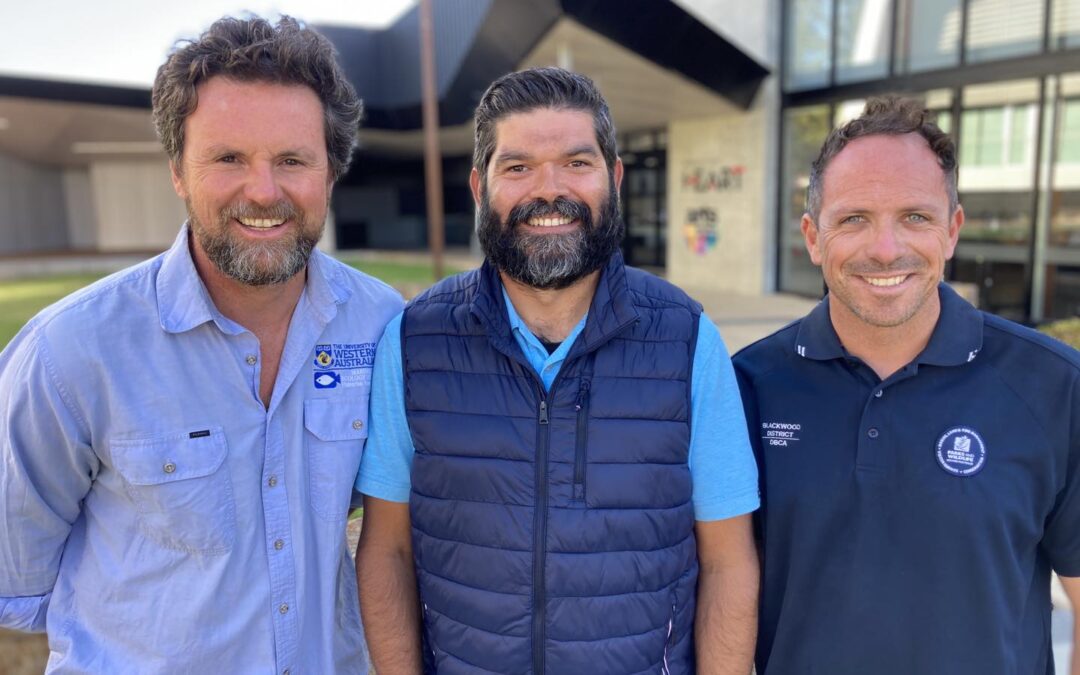Almost 300 people packed the Margaret River HEART on Tuesday night to hear about our incredible local marine environment – and the threats posed by human impacts.
It was the latest event in Nature Conservation Margaret River Region’s Environmental Sundowner Series, with talks by three expert speakers followed by an audience Q&A – which sparked lively debate about our local marine environment, how we enjoy it and how to best care for it into the future.
Undalup Association’s Zac Webb shared the deep connection of the Wadandi people to the marine world and explained that, to traditional owners, “there is no line between land and sea”. He discussed a joint project between Wadandi traditional owners and University of WA (UWA) researchers, supported by the Australian Governments Marine and Coastal Hub that combined cultural science and western science to map ancient riverbeds and wetlands that were exposed during the last ice age but were now underwater.
Speakers also included Dr Tim Langlois from UWA Oceans Institute and School of Biological Sciences, who has studied marine parks around the world and in WA including extensive research on the Ngari Capes Marine Park and the offshore Australian Marine Parks.
Dr Langlois said, much like the South-West was a biodiversity hotspot on land, our seascape was also “amazingly diverse” due to its ancient seabeds, mix of limestone and granite underwater geology, clear waters and 60 million years of “climatic buffering” from the warm waters of the Leeuwin Current. He said our region had the deepest seagrass beds in the world, with diverse golden kelp forests in shallower waters and black coral and sponge gardens in depths beyond 70m.
“It really is amazing,” he told the audience. “You have this incredible diversity of fish found nowhere else on the planet, plus more species of algae, more species of seagrass. There are the most incredible offshore habitats, where you get these real hotspots of diversity.”
Dr Langlois said Australia wide research showed no-take sanctuary zones were most effective when they were large and they extend all the way to shore, protecting marine life right from the beach. “You’ve got to find the balance, but the balance does include sanctuary zones that are close to people and are big enough to protect a range of species,” he said. “Sanctuary zones that protect the shore also tend to have more larger fish inside them.”
Meanwhile, David Lierich, a marine park ranger, told the audience our marine ecosystems were faring better than some others in WA where heatwaves and other impacts were taking a toll.
He said Ngari Capes Marine Park was home to more than 150 species of fish and “abundant and vibrant, colourful and beautiful sponge gardens, rivalling the colours of the reef up at Ningaloo”. “I hope you can realise how special this area is and if we all work together we can try and protect it,” he said.
Mr Lierich said monitoring was under way now to assess how effective the sanctuary zones are, while he said community awareness of and support for the marine park was very high. He said some near-shore species, such as whales, were “more vulnerable to human activity” because peak migration season coincided with spring when protected bays see increased boating activity.
Drew McKenzie, general manager at Nature Conservation, said the evening had been a chance to “delve below the surface into the deep biodiversity and cultural richness that our marine environment holds”. “Our motto at Nature Conservation is connect, respect and act, and the big number of people who came tonight highlights that many, many people in our community want to do the same,” he said.
Among the questions raised by the audience was the possibility of a marine sanctuary at Gnarabup.
This event is the sixth in Nature Conservation’s series of informal sundowner evenings which kicked off in 2022, bringing expert speakers to our region. More sundowners are scheduled for coming months, with details coming soon. This event was possible thanks to funding from the Shire of Augusta Margaret River.

